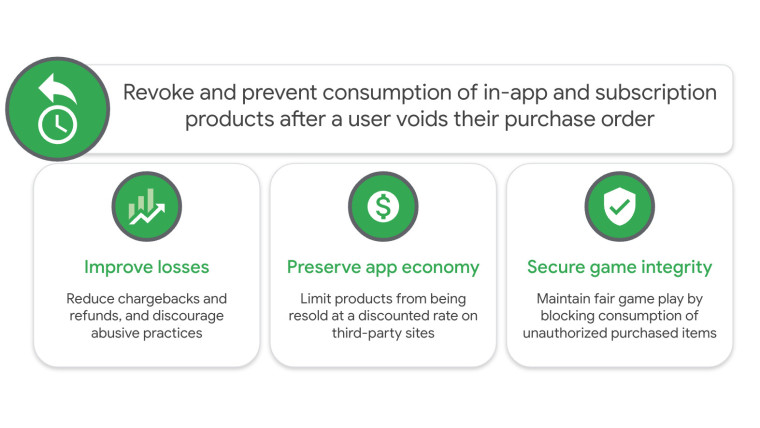
3-26 #Heading50 : TSMC’s new plant in Arizona will start producing 4nm chips from 2024; Arm is planning price hikes for some of its biggest customers as it implements a new business model; Pegatron is reportedly in talks to open a second India factory; etc.

NVIDIA has announced that BYD, the world’s leading manufacturer of new energy vehicles (NEVs), will extend its use of the NVIDIA DRIVE Orin centralized compute platform in a broader range of its NEVs. The enhanced partnership expands BYD’s use of DRIVE Orin across the multiple models in its next-generation Dynasty and Ocean series of vehicles, bringing safe and intelligent vehicles to market.(Gizmo China, Nvidia)
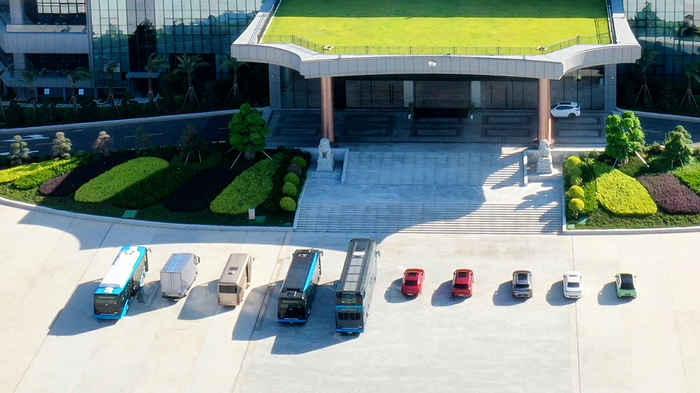
Taiwan Semiconductor Manufacturing Company (TSMC) is setting up a new production plan in Arizona, United States at a cost of around USD12B. TSMC’s new plant in Arizona will start producing 4nm chips from 2024. The report further adds that Qualcomm’s Global Senior Vice President and Chief Operating Officer Chen Ruowen said that Qualcomm will be the first customer of TSMC’s US plant’s 4nm chips. However, Digitimes quoted sources as saying that judging from the current progress of engineering and equipment installation, TSMC’s new U.S. fab is unlikely to be fully operational in 2024, and may be delayed until 2025. The overall construction and equipment installation progress of TSMC’s new fab in Arizona, USA, has been delayed, and the foundry must also address severe manpower shortages, soaring costs and new problems involving foreign employees.(Gizmo China, IT Home, UDN, CTEE)
Arm is reportedly planning price hikes for some of its biggest customers as it implements a new business model. The move from Arm’s parent company SoftBank is part of measures designed to increase profitability ahead of its impending IPO. Arm’s new pricing strategy will see customers billed based on the value of the final device a chip is used in, rather than the value of the chip itself. The new pricing could be put in place as early as 2024, and Arm has already been sounding major customers such as Qualcomm and Mediatek about the plan. Apple, which has a special royalty agreement with Arm, will not be impacted. (CN Beta, Financial Times, Tech Monitor, WCCFtech)
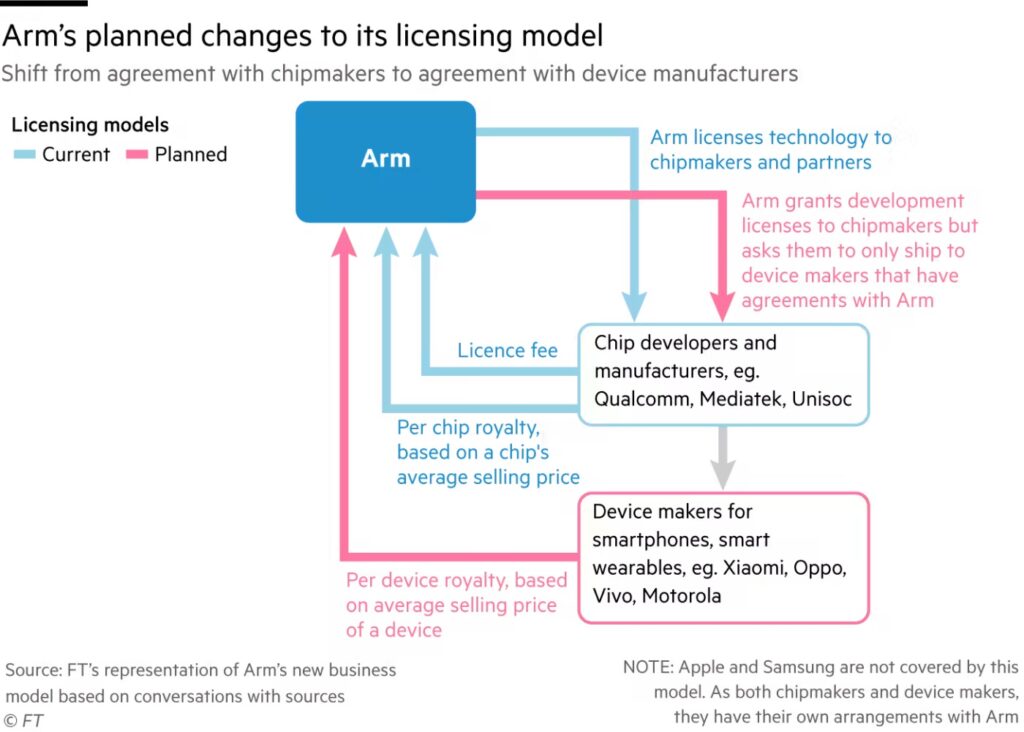
US semiconductor company Marvell Technology is laying off its entire research and development team in mainland China. Marvell said it is eliminating about 320 jobs, or 4% of its global workforce, in response to what the company described as an industry slowdown. (CN Beta, SCMP, Bloomberg, Yahoo)
Samsung Electronics has revealed a new Exynos Connect brand for low-range communication solutions that combine Bluetooth, Wi-Fi, and ultra-wideband. The first chip to debut in the family is the U100—an ultra-wideband chip for mobile and automotive devices. The Exynos Connect U100 is a low-power processor that facilitates a broad frequency spectrum for short-range communications. Giving up long-range transmissions enables fast data transfers at low power consumption and immensely high spatial and directional orientation accuracy. Samsung claims U100’s ToA (time of arrival) and AoA (three-dimensional angle of arrival) measurements allow single-digit centimeter accuracy and under five degrees of angular accuracy.(GSM Arena, Neowin, Samsung)
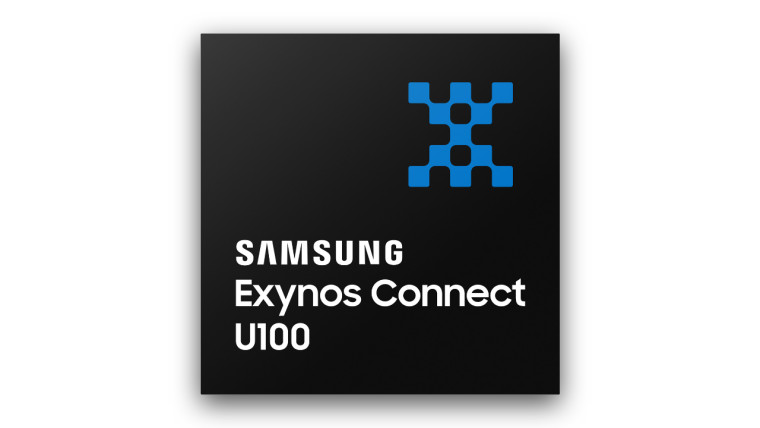

According to the DSCC, which compares Apple iPhone panel shipment data from Jun 2022 through Apr 2023 (allocating a 2-month forecast), shipments for the 6.7” iPhone 14 Plus are 59% higher than they were for the 5.4” iPhone 13 mini over the equivalent period year-on-year. That is despite evidence suggesting that the iPhone 14 Plus is the least popular model in the current series. The iPhone 14 series has seen a 39% decline in display orders versus the iPhone 13 through Apr 2022, year-over-year. Display orders were also down 23% from Mar to Apr 2022 for the iPhone 14 series. Although the iPhone 14 Plus appears to be doing a lot better than the iPhone 13 mini, it is far behind the iPhone 14 Pro Max, which takes a 36% share of overall panel shipments for the series. The iPhone 14 Pro accounts for 28% of shipments, while the iPhone 14 takes a 25% share. The iPhone 14 Plus meanwhile languishes behind the others with a 11% share. (Apple Insider, Display Supply Chain, CN Beta, Mac Rumors)
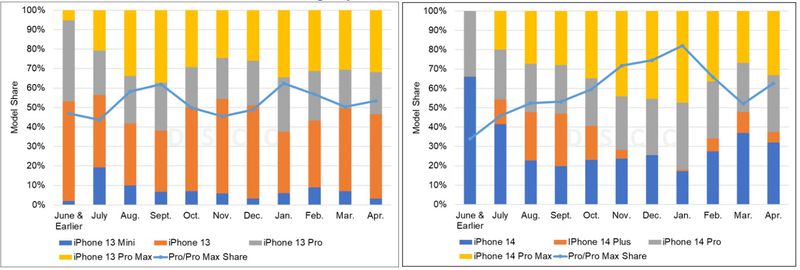
Japan’s Ministry of Economy, Trade and Industry has announced that it has amended and relaxed rules over the export of three semiconductor materials to South Korea with immediate effect. Since Jul 2019, three key materials that are used in semiconductors and OLED panels have been put under stricter export controls. Japanese exporters have to meet strict criteria before they can obtain permits to ship those materials to South Korea, such as demonstrating that they had established internal export rules and on-site inspections. Japan made the following items subject to individual review before export: hydrogen fluoride and photoresists that are essential in semiconductor production; and fluorinated polyamide which is used as a protective material for OLED panels. (CN Beta, Asia Nikkei, Digitimes)

Apple is allegedly set to launch its first-generation Mixed Reality Headsets later 2023, with Sony and LG being the initial suppliers of the displays used in the XR headsets. The displays used in these headsets are expected to be a technological breakthrough, with OLEDoS (OLED on Silicon) displays providing an ultra-high resolution of 3000-4000ppi. These displays will be smaller than an inch in diagonal length and will use silicon wafer-based CMOS substrates, unlike normal OLED display panels that use glass substrates. Samsung is also working on developing an RGB OLEDoS display and is expected to bring out a 3500ppi FMM (Fine Metal Mask) with the help of APS Holdings. (Gizmo China, Patently Apple, The Elec)

Samsung is said to be working on a “Tri-Fold” device, and this “might finally ship in 2023”. This promises to be a dual-hinge, three-part foldable. There is no Galaxy S23 FE under development. (CN Beta, GSM Arena, Twitter, Pocket-Lint)
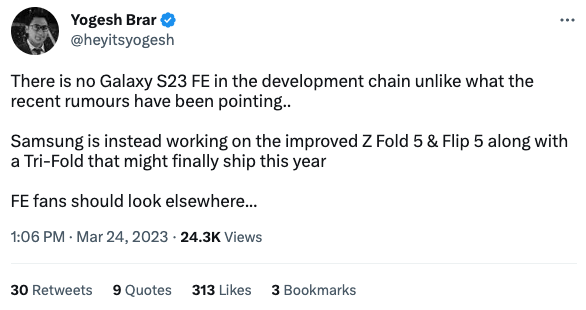

OmniVision has announced the new OS04D, a 4Mp image sensor that brings 2K resolution digital images and high-definition (HD) video at 30 frames per second (fps) to IP and HD analog security cameras, including smart home, doorbell and baby monitoring devices. The OS04D CMOS image sensor utilizes a high-performance backside-illuminated (BSI) pixel while also providing 40% power consumption savings, as well as improvements of over 30% in signal-to-noise ratio (SNR1) and 40% in sensitivity when compared with its predecessor.(Gizmo China, OmniVision)


LG Energy Solution (LGES) has announced it will invest approximately KRW7.2T (USD5.5B) to construct a battery manufacturing complex in Queen Creek, Arizona. The complex will consist of two manufacturing facilities – one for cylindrical batteries for electric vehicles (EV) and another for lithium iron phosphate (LFP) pouch-type batteries for energy storage systems (ESS). Out of the KRW7.2T, the company plans to invest KRW4.2T (USD3.2B) in building cylindrical battery manufacturing facility with a capacity of 27GWh, and KRW3T (USD2.3B) in LFP pouch-type battery facility with the capacity of 16GWh. Both facilities, totaling 43GWh, plan to break ground in 2023. The new cylindrical battery manufacturing facility aims to start mass production of 2170 cells in 2025, mainly for EV makers in North America. The new manufacturing facility for LFP pouch-type batteries for ESS, which is the first ESS-exclusive battery production facility in the world, aims to start production in 2026. (CN Beta, Arizona Commerce Authority, Bloomberg, PR Newswire)

realme mobiles are causing concern among many of their users due to battery issues. Users have reported that their batteries are not lasting as long as they should and in some cases, they have suddenly stopped working altogether. The problem seems to be affecting several different models of the brand. And users are confused as to why this is happening. Especially since they have not made any changes to their charging habits or updated their mobiles. The company has not commented on the issue. And it is unclear if they are aware of the issue or if they are working on a solution. (GizChina, Movilzona)
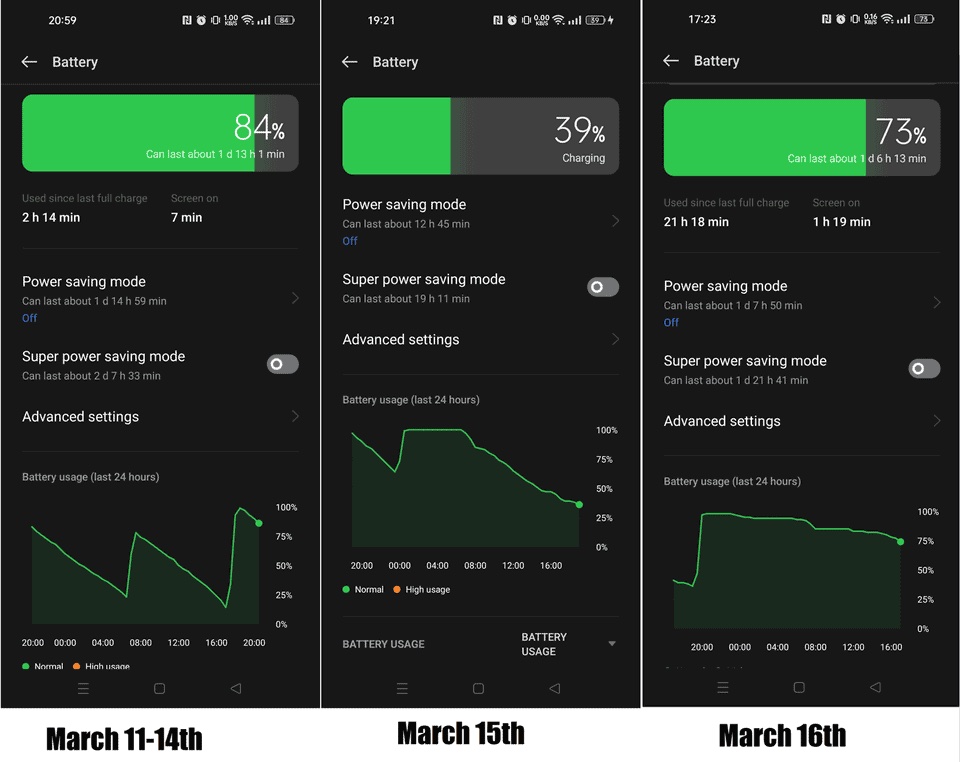
Huawei Digital Power has launched its next-generation FusionCharge 40kW DC Charging Module. Huawei claims its latest EV charging tech is a reliable, low noise, and highly efficient charging module. This solution will become the core of electric vehicle charging facilities. As of right now, the brand has 8 piles at the station, which are currently being used for internal testing. The terminal adopts a liquid cooled heat radiation system that has an output voltage range between 200V and 1000V. It can also output a maximum current of 600A and it has a maximum output power of 600kW.(Gizmo China, Huawei, Pandaily, Sohu)
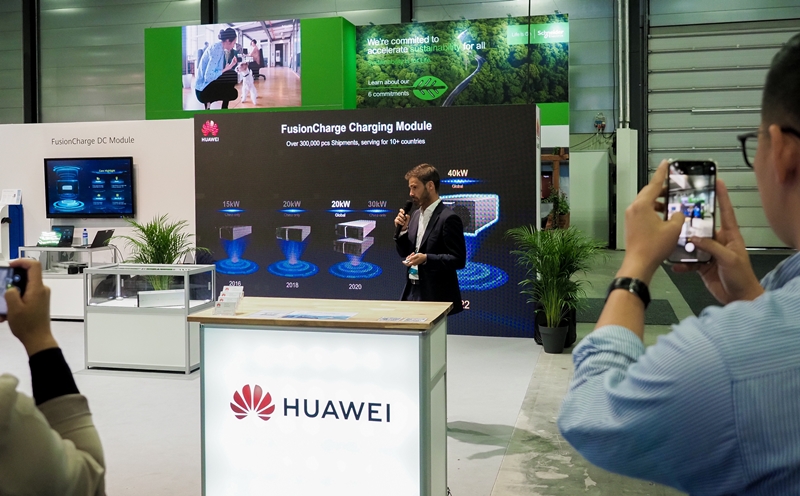
According TF Securities analyst Ming-Chi Kuo, Apple has significantly increased the total shipment forecast of its 20W USB-C charger by approximately 120% for 2Q23 and 3Q23 and has set 20W USB-C charger shipment at about 70 mn units for 4Q23, as it is optimistic about strong replacement demand for 20W USB-C chargers following the switch to USB-C for the iPhone 15 series. Apple’s 20W USB-C charger shipments in 2023 are anticipated to see a significant 30–40% YoY growth, amounting to 230–240M units, thanks to the strong replacement demand. He believes Apple will optimize the fast charging performance of MFi-certified chargers for the iPhone 15. Among Apple’s chargers, the 20W USB-C model is the most cost-effective choice for iPhone users, resulting in strong replacement demand for 20W USB-C chargers. (CN Beta, Medium, Twitter)
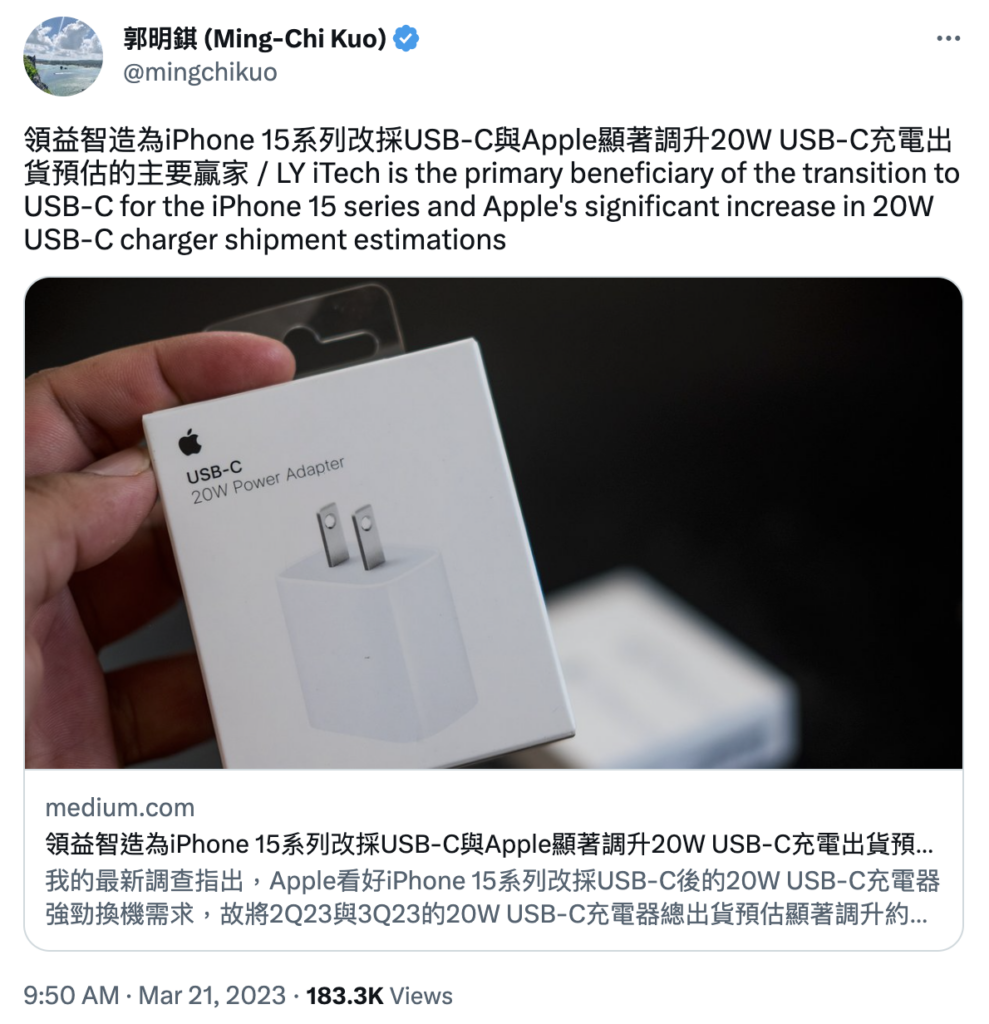
Samsung Galaxy A14 (non-5G model) will reportedly come without a bundled charger. It will probably come with just a USB Type-C to USB Type-C cable in the box for charging and data transfer. While companies claim that they have removed chargers from the box to reduce waste and make their products more environment-friendly, most of them still sell chargers with unnecessary packaging contributing to packaging waste. They profit a lot from lower shipping costs, as slimmer phone boxes consume less storage space in shipping containers. (GizChina, Twitter, SamMobile)
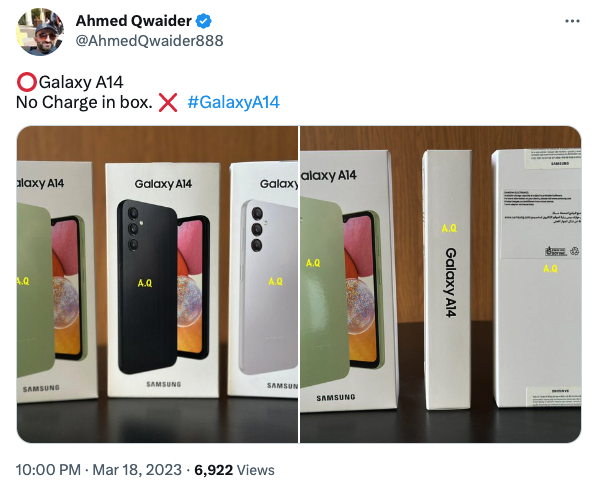

Xiaomi, OPPO, and vivo are collectively working on a new method to pull Android data from their smartphones to make switching devices much more effortless. Xiaomi says it is adding new support for migrating third-party application data from phones manufactured by OPPO and vivo. MIUI has further shared some instructions on how to proceed with the migration process. In addition, OPPO (ColorOS) and vivo (OriginOS) have also acknowledged their support. The process of shifting from an OPPO or Vivo device to a Xiaomi handset involves using the “Mi Replacement” feature, where users must scan the code to install the Mi Replacement on their respective devices and begin the migration.(Weibo, Android Authority, Android Central, 9to5Google, My Drivers, IT Home)
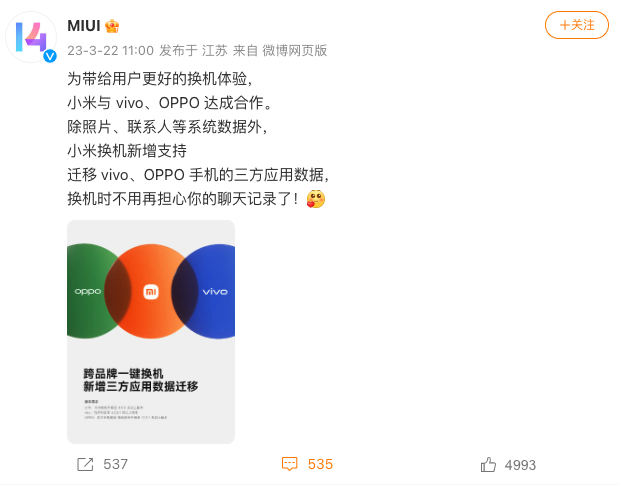
Samsung’s newly launched Galaxy M54 5G comes with support for eSIM connectivity, which makes it the first mid-range smartphone from the company to have support for it. Samsung started offering eSIM support for its premium smartphones a few years back, starting with the Galaxy S20 series launched in 2020. The feature enables users to connect to a network without the need to insert a physical SIM card into the smartphone.(Gizmo China, Jagran)


Consumer Intelligence Research Partners (CIRP) found that, among consumers who purchased a new Apple iPhone in 2022, 43% chose to trade it in. Another 7% of people sold their devices to a third party. Meanwhile, 36% of consumers kept their older phones as a backup or to give to a friend or family member. Those using an Android phone had different patterns for disposing of their old models. Most of them — 65% — kept their old phone as a backup or to give to a friend or family member. Even though most iPhone retailers also accept trade-ins for Android models, only 14% of Android users do so. (Apple Insider, CIRP)
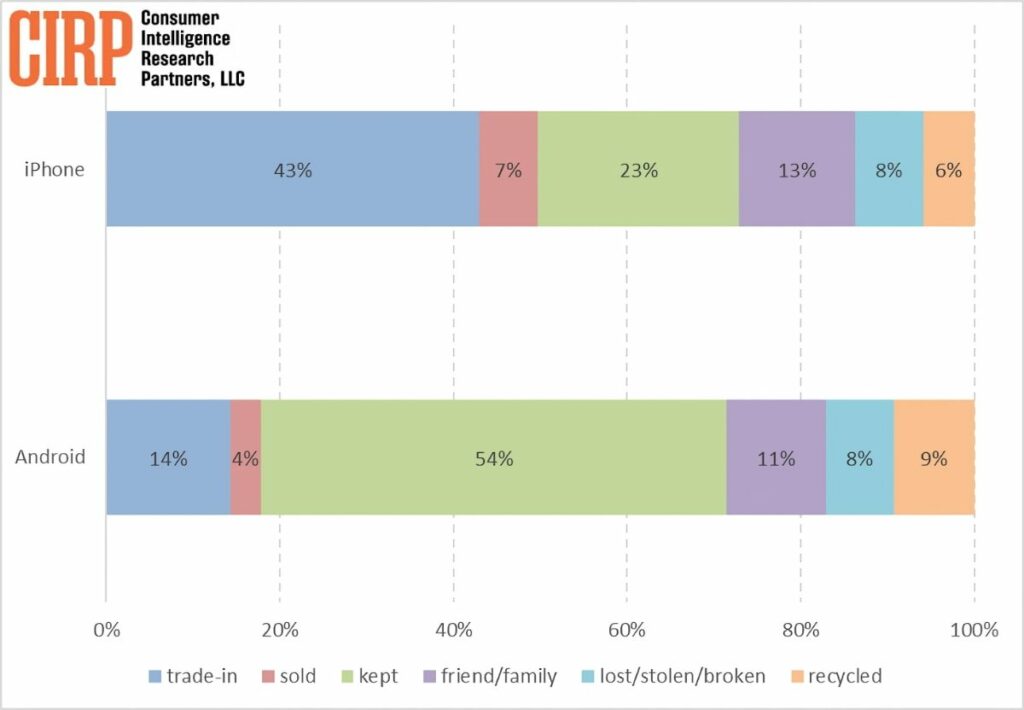
Apple is seeking changes in India’s labor laws as part of its effort to expand local production, and regional governments are yielding to its request as they are eager to snatch iPhone assembly from China. India’s southern Tamil Nadu state, where Apple’s top supplier Foxconn Technology Group operates the nation’s largest iPhone plant, is considering passing new rules that will make factory shifts more flexible. Executives from Apple and the Indian Cellular and Electronics Association lobby group — which represents the US company as well its suppliers such as Foxconn, Pegatron and Wistron — met with state government officials over 6 months to push for the reforms. The planned changes would bring local working hours on par with the iPhone factories in China. The state of Karnataka, which houses Wistron’s iPhone plant and where Foxconn is set to build a new USD700M facility, passed legislation in recent weeks to allow for labor rule changes.(Apple Insider, Mint, Bloomberg)
Apple’s Taiwanese supplier Pegatron is reportedly in talks to open a second India factory, as the U.S. tech giant’s partners continue to diversify production away from China. Pegatron plans to add a second facility near the southern city of Chennai in Tamil Nadu state, just 6 months after opening the first with an investment of USD150M. India is seen as the next growth frontier for Apple. Around USD9B worth of smartphones have been exported from India between Apr 2022 and Feb 2023, and iPhones accounted for more than 50% of that, according to the India Cellular and Electronics Association. Pegatron currently accounts for 10% of Apple’s iPhone production in India on an annualised basis, according to Counterpoint Research. (India Times, Mint, Reuters)
The Finance and Accounts Manager of OPPO Mobiles India, Mahendra Kumar Rawat, has been arrested by the Central Goods and Services Tax (CGST) Commissionerate for allegedly availing of input tax credit (ITC) worth INR 19 crore through fake invoices. Rawat was later produced in a local court in Bhiwandi town and remanded in judicial custody until 3 Apr 2023. According to the CGST Bhiwandi Commissionerate’s statement, Rawat was arrested under section 69 of the CGST Act, 2017, for contravening section 132 of the same Act. The investigation conducted by the anti-evasion wing of the CGST Bhiwandi Commissionerate found that OPPO Maharashtra was involved in fraudulently availing of fake ITC without receipt of any goods.(Gizmo China, India Times)

Lenovo is allegedly cutting off its Legion lineup. Lenovo Legion is responsible for its gaming phones. The company is now left with the Motorola mobile division which it bought in 2014 for USD2.9B. Lenovo mobile phones have not been able to become a pillar like PCs after 20 years of ups and downs. (GizChina, CN Beta)
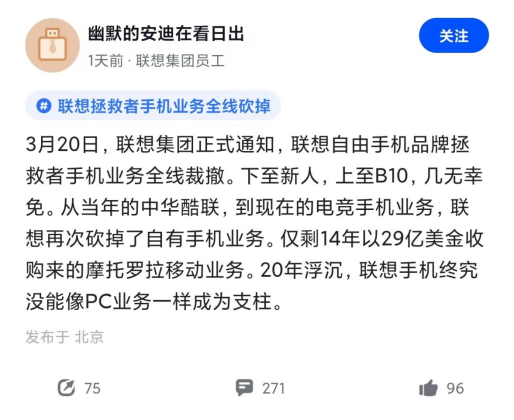
Although overall global smartphone sales in 2022 fell 12% YoY due to macroeconomic difficulties, global premium (≥USD600 wholesale price) smartphone sales climbed 1% YoY in contrast, which allowed the price segment to contribute to 55% of the total global smartphone market revenue for the first time ever. The premium segment, which has been consistently outperforming the global smartphone market, captured more than one-fifth of total global smartphone sales as well. Among OEMs, sales for Apple grew 6% YoY in the premium market, expanding its share to capture three-fourths of the total sales in the segment. Apple could have grown more, if not for the iPhone 14 Pro and Pro Max supply disruption during the peak holiday season in 2022. Apple also gained from Huawei’s decline in China. (Counterpoint Research, GizChina)
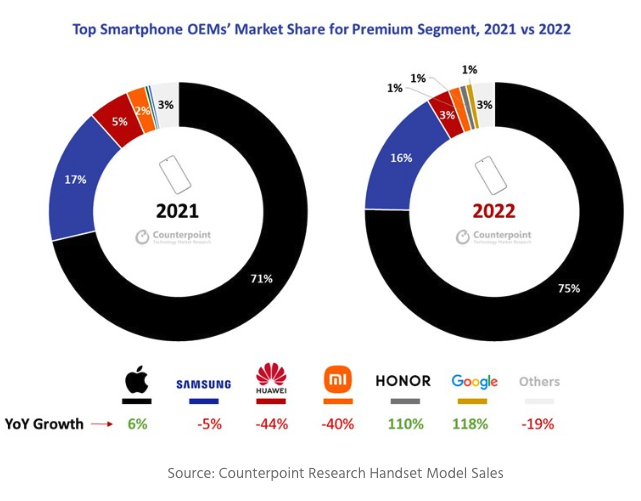
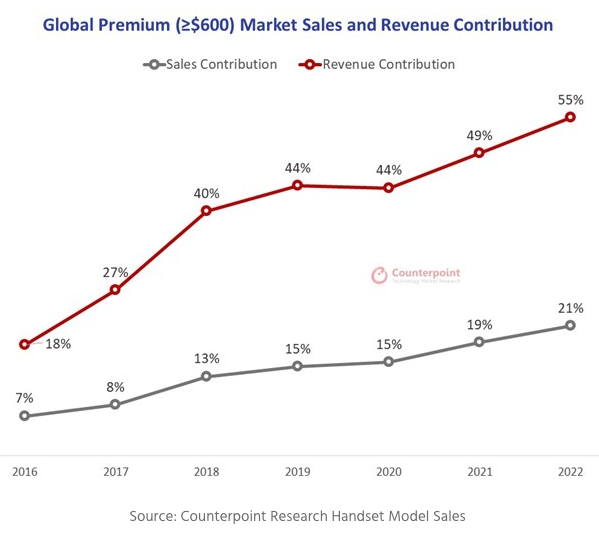
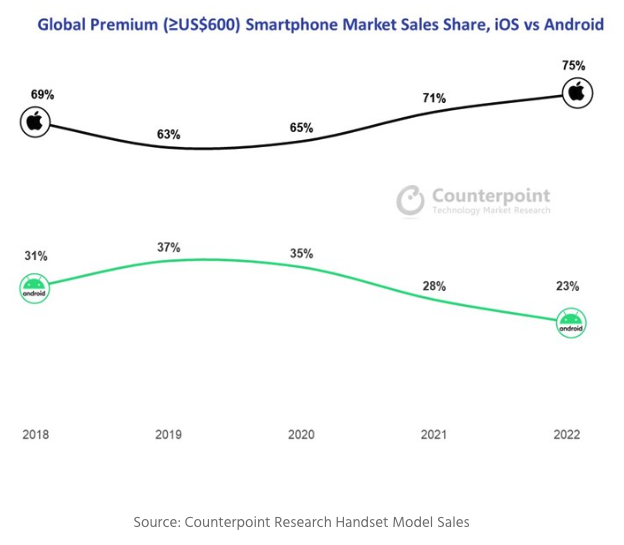
Samsung has confirmed that the whole 2023 Galaxy line up from A budget to Z flagship will share the same exact design language. The upcoming Galaxy F, A, M, S, and Z series models would basically feature a flat design on the front and back while having curved corners on all four sides.(Twitter, Gizmo China)
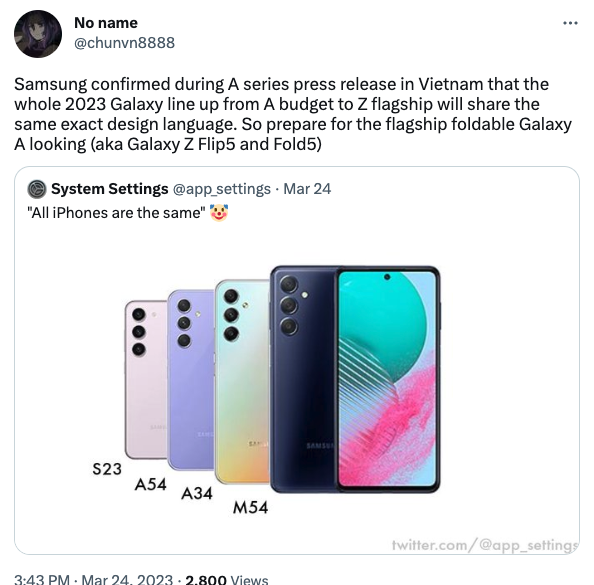

Apple’s new patent titled “Wearable Electronic Device Having A Digital Camera Assembly” is proposing that a Watch could fit a camera into a slight protrusion toward the top of its chassis, above the display. The patent focuses on integrating a camera into a future Apple Watch that is able to be redirected to accommodate a number applications such as Face ID, videoconferencing, QR Code scanning, video capture, photos and more. To perform one or more of these functions, the digital camera assembly may be positioned within a portion of the housing such that the digital camera assembly can be directed toward a subject.(Apple Insider, USPTO, Patently Apple)
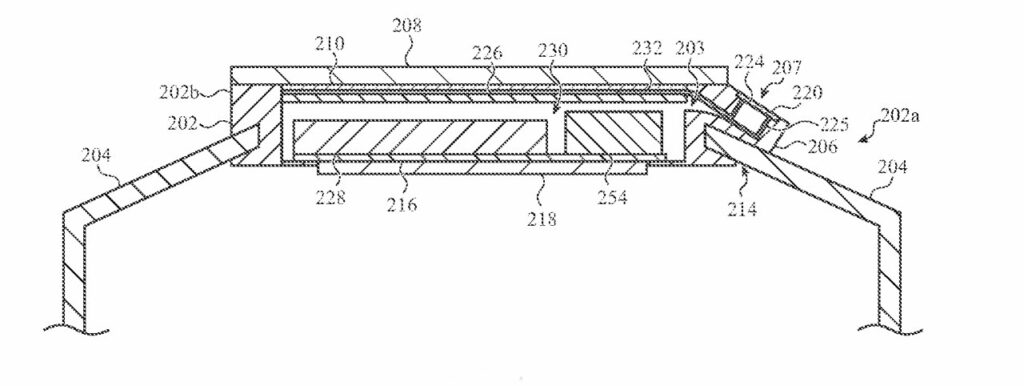
Apple’s AirPods could gain more prominent hearing health features within 2024-2025, according to Bloomberg’s Mark Gurman. He believes Apple will “upgrade the AirPods to become a health tool in the next year or two,” adding “the ability to get hearing data of some sort”. Apple has already added several hearing-focused features to the AirPods in recent years such as Live Listen and Conversation Boost, but Gurman noted that such features are not yet FDA approved or designed to serve as a hearing aid replacement. Given Apple’s health objectives, he expects AirPods to take on these sorts of functions “more officially” in the near future. (MacRumors, Bloomberg)

Apple has recently rolled out the iOS 16.4 release candidate for developers, which includes references to new AirPods with model code A3048 and a new AirPods case bearing model designation A2968. According to TF Securities analyst Ming Chi-Kuo, these are likely the USB-C version of AirPods Pro 2 launched in 2022 with a Lightning port, and their mass shipments are expected between 2Q23-3Q23.(GSM Arena, Twitter, Twitter, MacRumors)
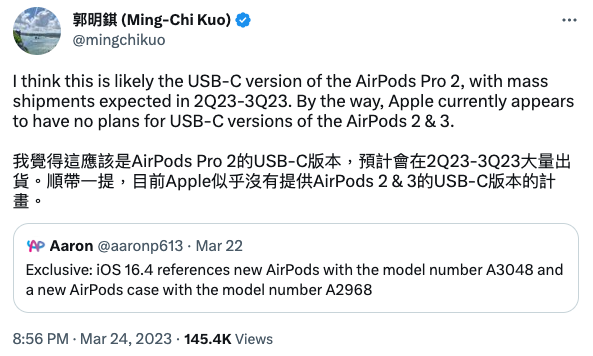
2023 will be a year of recovery for wearable devices after the market’s first-ever contraction in 2022. Global shipments in 2023 are poised to reach 442.7M devices in 2023, growing 6.3% YoY. The majority of shipments are expected later in the year as 1Q23 will likely see another YoY decline, according to IDC. Excess inventory is plaguing many channels and depressing both shipments and average selling prices (ASPs) in the short term. However, IDC expects these wrinkles to be ironed out by 2H23 with growth to continue well beyond as worldwide shipments are forecast to reach 644.5M in 2027 with a compound annual growth rate (CAGR) of 5.4%. (Neowin, IDC)
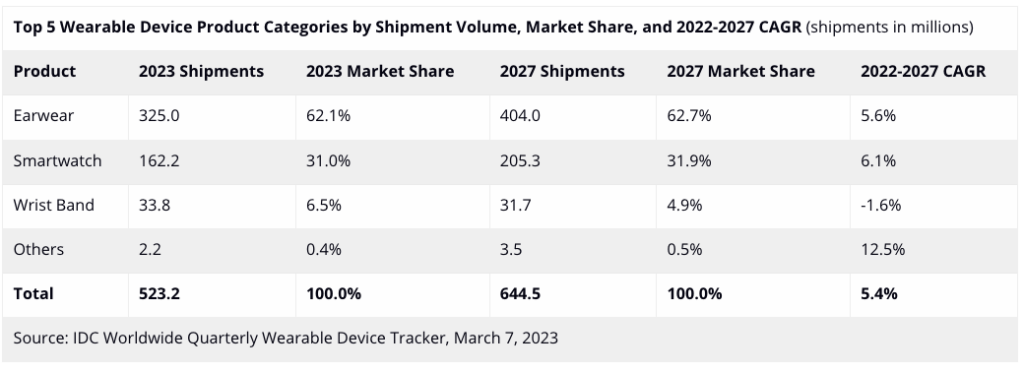

Apple TV+ is reportedly looking to make more original films, and also partner with other studios to distribute them with extended theatrical runs. Apple Original Films is aiming to spend USD1B per year on producing what are described as blockbuster movies. As well as the production budget costs, the money would be spent on releasing the films in thousands of movie theaters, via an as-yet unconfirmed distribution company. The intention is reportedly to give significant movies a release at least a one month exclusive theatrical window before they come to Apple TV+. (Apple Insider, Bloomberg, The Verge)

Lynk & Co’s new medium-sized SUV Lynk & Co 08 official image has finally been officially released, and it is expected to be launched in 2023. The car has a 12.3” full LCD instrument panel and a 15.4” floating central control screen, providing a HUD system with a wider field of view. The 08 will be equipped with the Meizu Flyme Auto car-machine system for the first time. In terms of power, the car will be equipped with the Lynk E-Motive intelligent electric hybrid system, which consists of a newly developed four-cylinder electric hybrid engine and electric hybrid gearbox. It is expected to mainly promote the 1.5T EM-P plug-in hybrid system. The comprehensive cruising range can exceed 1000 kilometers.(My Drivers, Sina, Techgoing)
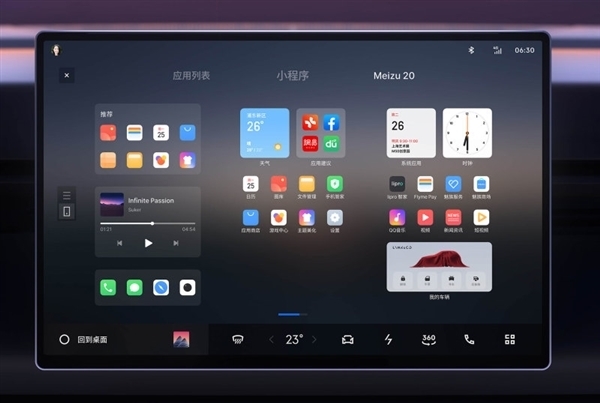
Archer Aviation and United Airlines have announced a partnership to launch a commercial air taxi route in Chicago. The companies plan to open the flight path between downtown and O’Hare International Airport in 2025. Besides being United’s headquarters and largest hub, Chicago’s airport commute makes it an ideal testbed for flying taxis. Archer describes the upcoming route as “cost competitive” for passengers without going into specifics. In 2022, the airline ordered at least 200 electric flying taxis from Eve Air Mobility; that followed a USD10M deposit it placed with Archer the month prior.(Engadget, Archer)

Volkswagen has unveiled its affordable, mass-market electric vehicle in the form of a concept called the ID.2all. With a starting price of EUR25,000 (USD26,600) and an estimated range of 450km (279 miles), it is intended to be that most elusive thing: a plug-in vehicle for the people. VW outlined a strategy that includes an investment of EUR180B (USD193B) over 5 years in areas including battery production and raw materials, as it seeks to slash the cost of EV production and overtake Tesla and others by increasing its market share. The production version of the ID. 2all will be built atop the second-generation version of VW’s modular “MEB” electric vehicle platform.(The Verge, Volkswagen)
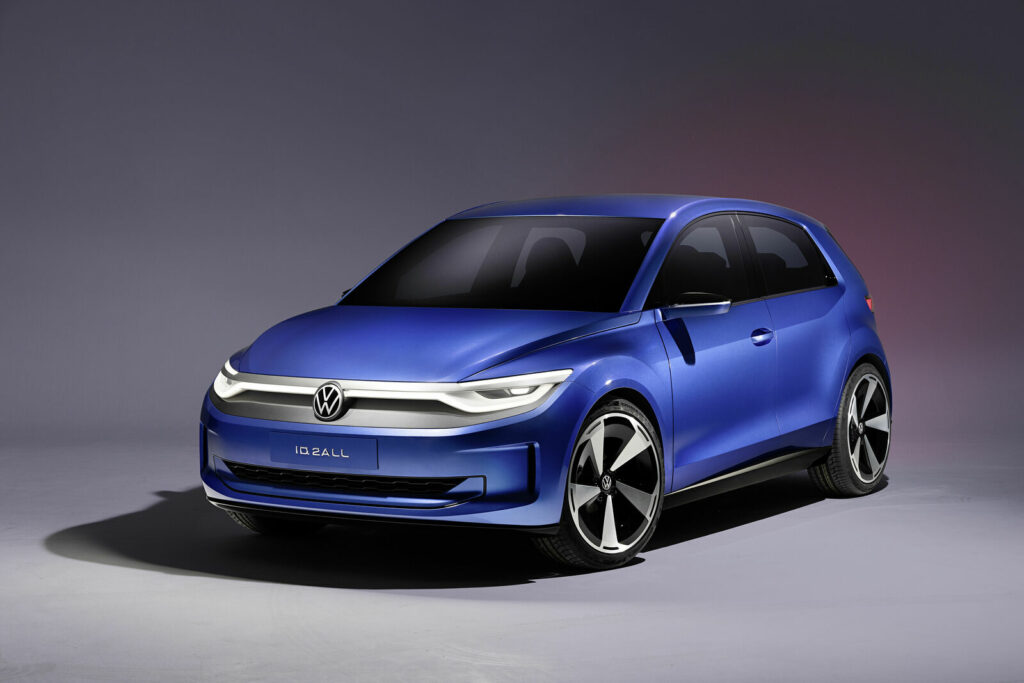
Rivian is in discussions with Amazon to dissolve the exclusivity piece of their commercial EV van deal. If successful, Rivian would be free to sell its commercial all-electric vans to other customers. Amazon has confirmed that the exclusivity deal still stands. Amazon is both a customer and investor in Rivian. Amazon holds about a 17% stake in Rivian. The two companies reached an agreement in 2019 that requires Rivian to sell to Amazon all of the vans it produces. At the time, Amazon said it had ordered 100,000 vans as part of an effort to reduce its climate impact.(TechCrunch, WSJ)
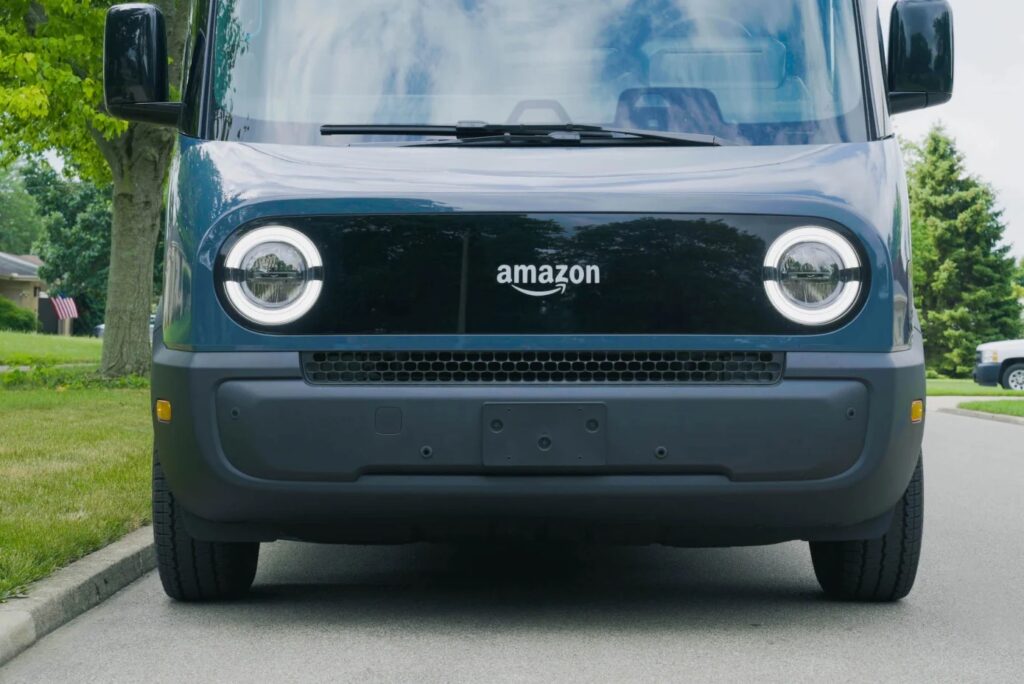
Ford has revealed plans for a second electric truck, codenamed Project T3, during a press conference at Ford’s USD5.6B BlueOval City EV mega-campus. The automaker says construction is on track to begin production in 2025. After capping the year off with 61,575 electric vehicle sales (up 126% YOY) in 2022, Ford became the second-largest EV maker in the US, behind only Tesla. To accelerate EV production, Ford revealed plans in 2021 for its “largest, most advanced and efficient auto complex” in the automaker’s rich 118-year history. The project, called BlueOval City, is being constructed on a nearly 6-square-mile site in Stanton, Tennessee, that Ford says will build next-generation electric F-series and lithium-ion batteries. (TechCrunch, Ford, Electrek)

Gogoro and Cycle & Carriage Singapore (C&C) have announced a partnership with leading food delivery platform Foodpanda in a battery swapping pilot that will support smart electric two-wheel vehicles for last mile deliveries in Singapore. The partnership follows Singapore Land Transport Authority’s (LTA) announcement in 2022 that it awarded Gogoro and C&C with a battery swapping sandbox pilot for electric two-wheel vehicles. As announced in Sept 2022, Gogoro and C&C have partnered to introduce a new and more efficient approach to electric refueling for two-wheel delivery fleets using Gogoro’s six-second Swap & Go battery swapping. (TechCrunch, PR Newswire, Yahoo)
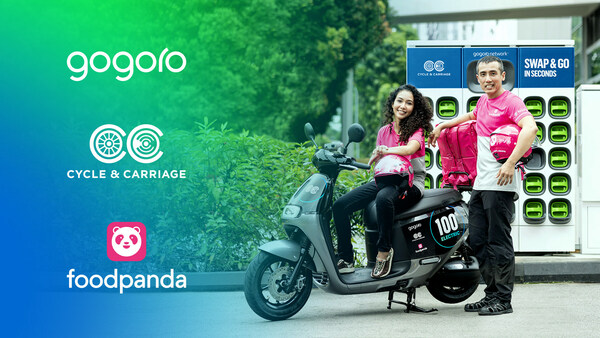

Google may be looking to integrate Bard into Messages. The latest beta version of the messaging app contains hints of early work on generative AI (artificial intelligence) features that will generate replies for messages. The company has already bundled Bard or similar AI tools with many of its products, including Gmail and Docs. Decompiling the APK for the latest beta version of Google Messages for Android, a familiar-looking new button in the compose box is discovered. It is the same “sparkle iconography” that Google uses for Bard and other AI-powered features across its products. The sparkle icon appears to the left of the emoji button in the compose field above your keyboard. (Android Headlines, 9to5Google)

Baidu, China’s search engine giant, has introduced its Ernie Bot. Baidu CEO Robin Li presented the prompts for Ernie and its answers in five functional areas, namely literature writing, business writing, logic and reasoning, Chinese interpretation, and multi-modal generation. (TechCrunch, YouTube, Baidu, DW)
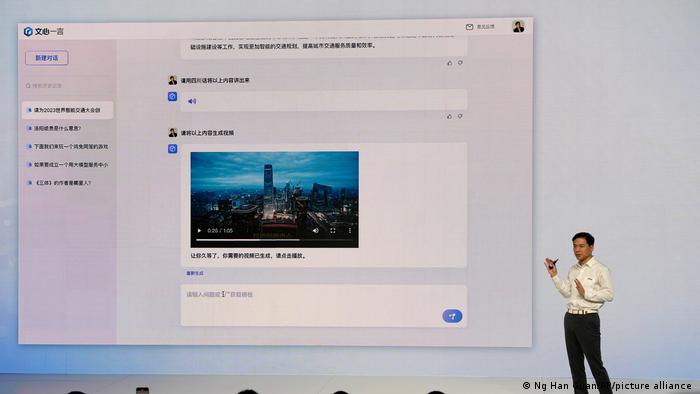
Apple is testing new natural language generation features for Siri. Codenamed “Bobcat”, this new technology is being tested starting with the latest tvOS 16.4 beta and will eventually make its way to the rest of Apple’s operating systems. Still, Apple is currently focused on using this technology to improve Siri. In the latest tvOS 16.4 beta, Apple has enabled a new framework for “Siri Natural Language Generation” capabilities. As it currently stands, Apple is only using natural language generation for telling jokes with Siri on Apple TV. The company is experimenting with how language generation could be used for timers, as well. (TechCrunch, 9to5Mac, NY Times)
OpenAI has released a powerful new image- and text-understanding AI model, GPT-4, that the company calls “the latest milestone in its effort in scaling up deep learning”. GPT-4 is available today to OpenAI’s paying users via ChatGPT Plus (with a usage cap), and developers can sign up on a waitlist to access the API. Pricing is USD0.03 per 1,000 “prompt” tokens (about 750 words) and $0.06 per 1,000 “completion” tokens (again, about 750 words). Tokens represent raw text; for example, the word “fantastic” would be split into the tokens “fan,” “tas” and “tic.” Prompt tokens are the parts of words fed into GPT-4 while completion tokens are the content generated by GPT-4.(TechCrunch, Open-AI, Bing)

Google is adding AI features to all of its Workspace products. These features will allow users to draft, reply, summarize, prioritize emails, brainstorm, proofread, write, and rewrite text documents, autogenerate images and even video with Slides, have Sheets create formulas autonomously, automate transcription notes in Meet, and enable workflows in Chat. As for Drive, Google is introducing the ability to select multiple items at once to enable batch actions. It is adding new search categories, such as type (PDF, documents, videos and zips), owner and last modified, as well, to make sorting and finding files a lot easier.(Gizmo China, Engadget, Google)
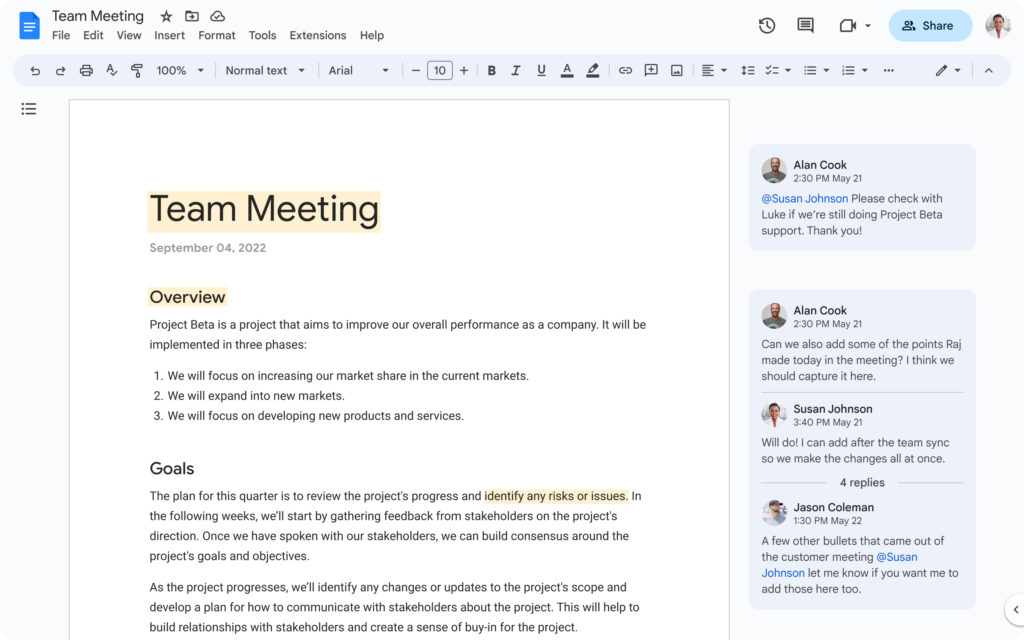

Amazon will lay off 9,000 more employees in the coming weeks, CEO Andy Jassy said in a memo to staff. The cuts are on top of the previously announced layoffs that began in November and extended into January. That round totaled more than 18,000 employees, and primarily affected staffers in its retail, devices, recruiting and human resources groups.(CN Beta, Business Today, The Information, CNBC, Amazon)
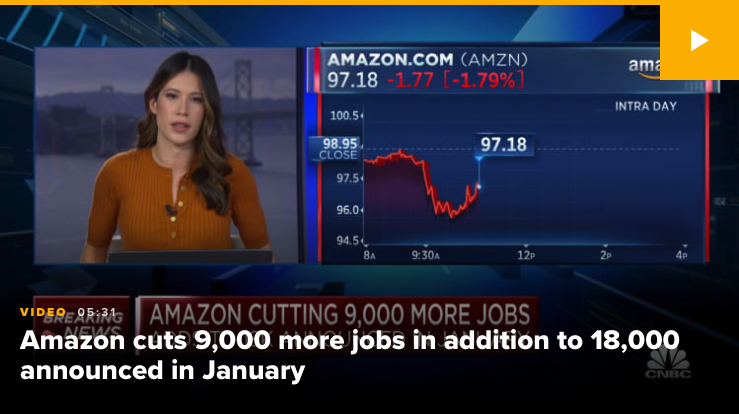

Google has announced that it prevented USD2B worth of fraud in 2022 on Google Play Commerce by tackling bad actors that were using different strategies to make money. Some tricks fraudsters tried included using a compromised payment method, asking for a refund for an in-app item that was already consumed, and the use of scammed gift cards for purchases. Google has two tools that developers can use to help reduce the abuse of their apps, they are the Voided Purchases API and Obfuscated Account ID. The Voided Purchases API provides you with a list of in-app and subscription orders for each user that has been voided – users are then unable to access the products from those orders. With the Obfuscated Account ID, Google can detect fraudulent transactions such as devices making purchases on the same account within a short space of time.(Neowin, Android Developers Blog)
